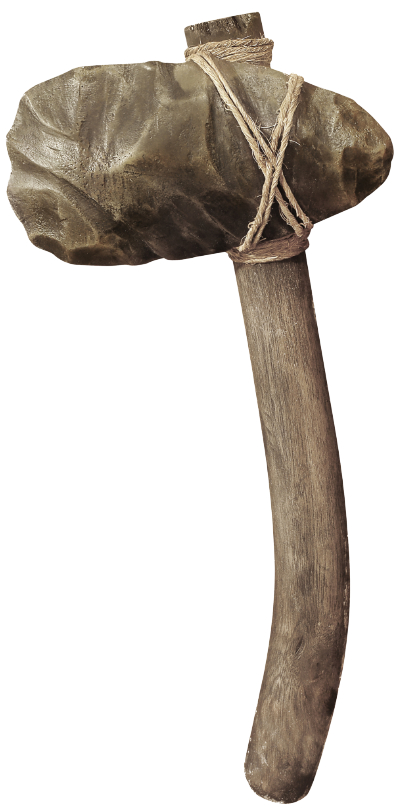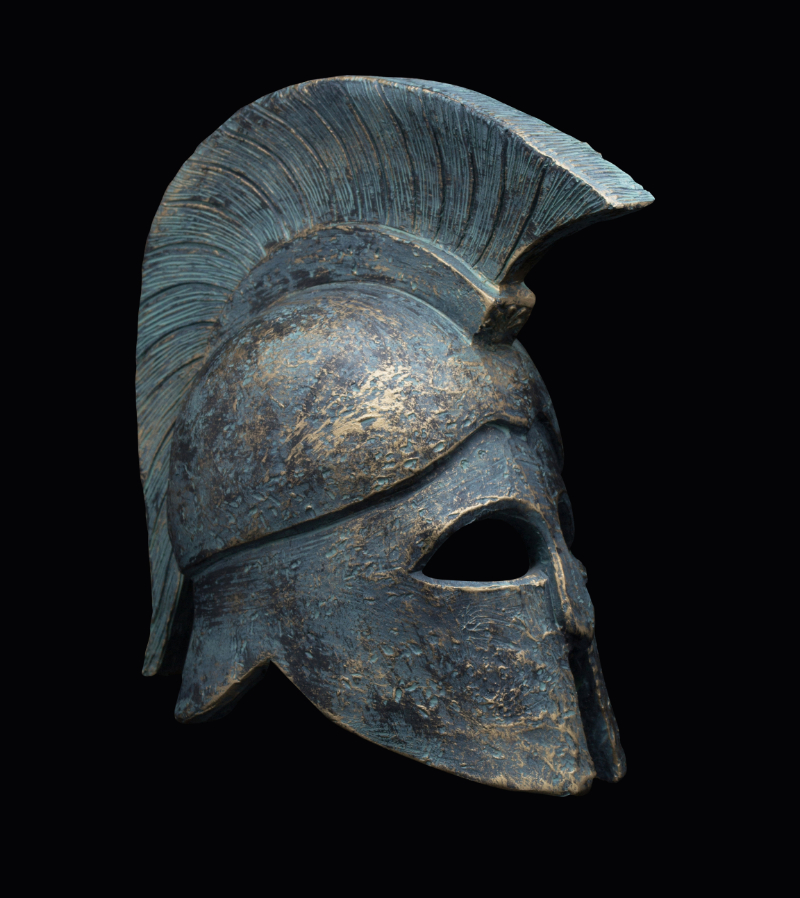What were the so-called Stone Age, Bronze Age, and Iron Age?

Archaeologists are fond of dividing up time into different ‘ages’. This can be quite confusing to the uninitiated, for several reasons. First, it helps to reinforce the idea of vast periods of time. After all, an ‘age’ can’t last for only a few decades, right? Dividing archaeology into time periods also makes people think these periods were worldwide, which is not at all the case.
We can easily dismiss the ‘Stone Age’ as evolutionary storytelling. Secularists believe that for millions of years man slowly evolved from apes and was not smart enough to make anything but crude stone tools. Yet, many of the stone tools we find exhibit sophisticated flaking techniques, and their arrows and spears tell us that they understood the principles of aerodynamics. One also wonders why it supposedly took people so long to figure out how to move beyond those crude tools when DNA in ancient bones reveals that they were, in essence, genetically identical to ‘modern’ man.
In reality, the ‘Stone Age’1 in the Middle East only existed for a very short time (a few decades to a century) after the Flood, before those people moved into the Chalcolithic, or Copper Age. The Stone Age lasted longer in places that were farther away from the centre of the Babel dispersion. Cultures may have lost some of the ancient knowledge as they moved across the globe. In addition, industrial progress is generally faster when more people are present.2 Trade networks, written records, and all the other trappings of ‘civilization’ lead to progress on many fronts. So those people who went the farthest from Babel stayed at a lower technological level for longer.
Also, the ‘ages’ are really not that long ago.
Biblically, the Israelites left Egypt during the Bronze Age. Anyone familiar with the history of Greece is familiar with the Bronze Age. This was the setting of the Mycenaean civilization and the (partly mythological) Trojan Wars. Yet, most of the more famous events happened later, in the ‘Classical Antiquity’ period. The Peloponnesian Wars fought between Athens and Sparta, the brief delay of the vast army of Persia by the ‘300’ Spartans at Thermopylae, the lives of Aristotle, Plato, and Socrates … all of these events post-date the Bronze Age.

Bronze was still commonly used after the Bronze Age, including the armour of those Spartan ‘hoplites’, as citizen soldiers of Greek city-states were known. Some of these events of classical antiquity are contemporaneous with King David (who lived in the ‘Iron Age’ about 1,000 BC, see 1 Samuel 13:19–23), or even the story of Esther, since it was her king that invaded Greece and triggered some of those famous stories!
If the Exodus happened in the Bronze Age, and the Iron Age was already well under way in the time of King David, these ‘ages’ have to be compacted into just a few centuries. For example, there were only 480 years between the Exodus and the construction of the Temple by David’s son, Solomon (1 Kings 6:1). Archaeologists know this. It is only the general public who seem to be confused.
Another issue with these ‘ages’ is that different locations are different in their timing. There is no global Iron Age, for example. The ‘ages’ scheme was invented for the Ancient Near East (i.e. Israel) and does not necessarily apply everywhere. Some locations skipped eras as they were exposed to trade with, or invasion from, more advanced civilizations.

Because of this, you cannot look at something like ‘Iron Age’ China and equate it to ‘Iron Age’ Israel. The accepted idea is that civilizations develop through a series of steps (advancing from the use of copper to bronze to iron), not that every world civilization hits those steps at the same time. Thus, one place in the world might be in the ‘Bronze Age’ while another is in the ‘Iron Age’. In fact, even though we are in the ‘Space Age’ there are people on the earth today still living in what would be called a ‘Stone Age’ culture.
The ‘age’ a civilization is in also has nothing to do with intelligence. The arrival of Europeans in the Americas caused Native Americans to be decimated by plagues like smallpox. By the time of significant European settlement, these had killed off perhaps 90% of the original population. Any culture that goes through a crash like that is going to experience a great loss of knowledge, trade, industry, and ‘civilization’.
There are also places in the world where the development of advanced technologies is hampered by a lack of trade routes; a lack of industrial resources; a lack of the social attitudes, presuppositions, and behaviours that enable science; or the presence of debilitating diseases like malaria. And yet, it is the natural inclination of sinful man to think that any culture that is not as technologically advanced must consist of individuals who are, on average, intellectually inferior. Instead, people groups all have the same intelligence,3 but intelligence, knowledge, and technology are not the same things.
A major fallacy of the ‘ages’ concept arises from ignoring the real history of the Bible. Long before Babel, even before the Flood, Tubal-Cain, son of Lamech and Zilla, “was the forger of all instruments of bronze and iron” (Genesis 4:22): an antediluvian Bronze and Iron Age!
What is bronze

Pure copper is easy to find in some areas of the world, but it is a very soft metal. It also corrodes quickly. However, if you mix it with about 12% tin, you get bronze, a strong, light alloy that can be poured or hammered into many different shapes.4 The post-Babel Bronze Age started after someone figured this out, but it required extensive trade routes. For the Mediterranean Bronze Age, tin often came from the British Isles. Copper was often mined in Spain or Egypt, and Israel had important copper mines south of the Dead Sea. Control of this area brought fantastic wealth to King David, who stockpiled tremendous amounts of bronze (1 Chronicles 22), and later to King Solomon, who had his artisans fashion huge bulls, a giant basin, and pillars of bronze that were placed in the Temple (1 Kings 7). But David and Solomon lived in the Iron Age, hence it is not so clear that the Iron and Bronze Ages are all that distinct. For the Chinese Bronze Age, the tin is thought to have mainly come from within China, but they made their bronze by mixing copper with arsenic before moving to the use of tin.
Few bronze implements have survived the ages, largely due to ‘bronze disease’. This is an irreversible and nearly unstoppable corrosion process that happens to bronze when it comes into contact with chlorides (from salt water or soil). It is also ‘contagious’ in that an unaffected piece of bronze can become contaminated if it comes into contact with a piece with bronze disease.
Bronze was superseded by iron in the Mediterranean region largely because the tin trade was disrupted. Iron needs no alloying element, and this outweighed the fact that pure iron is not as hard as bronze. But once blacksmiths worked out how to mix in the proper amount of carbon, steel was formed, which is harder and stronger than bronze.
References and notes
- Note that all of these ‘ages’ have multiple subdivisions. For example, the technical term for the ‘Stone Age’ is paleolithic (from the Greek words παλαιός [palaios] and λίθος [lithos], literally ‘old stone’). Terms like Mesolithic, Neolithic, Epipaleolithic, etc., follow from there. The Copper Age, Bronze Age, and Iron Age all have their own subdivisions. Return to text.
- Technology loss is acknowledged to be more likely in a small migrating group, see Wieland, C., Culture clash, Creation 17(3):42–44, 1995; creation.com/culture-clash. Return to text.
- Carter, R., A troubling thesis—Nicholas Wade pushes an old view of the origin of races. A review of A Troublesome Inheritance: Genes, Race and Human History by Nicholas Wade, J. Creation 28(3):26–30, 2014; creation.com/nicholas-wade-review. Return to text.
- Arsenic was an older alloying element, but tin is much better and is a lot less toxic. Bronze can also contain manganese, aluminum, nickel, phosphorus, silicon, or zinc. In earlier times, the term brass was reserved for a copper-zinc alloy. Return to text.


Readers’ comments
Comments are automatically closed 14 days after publication.